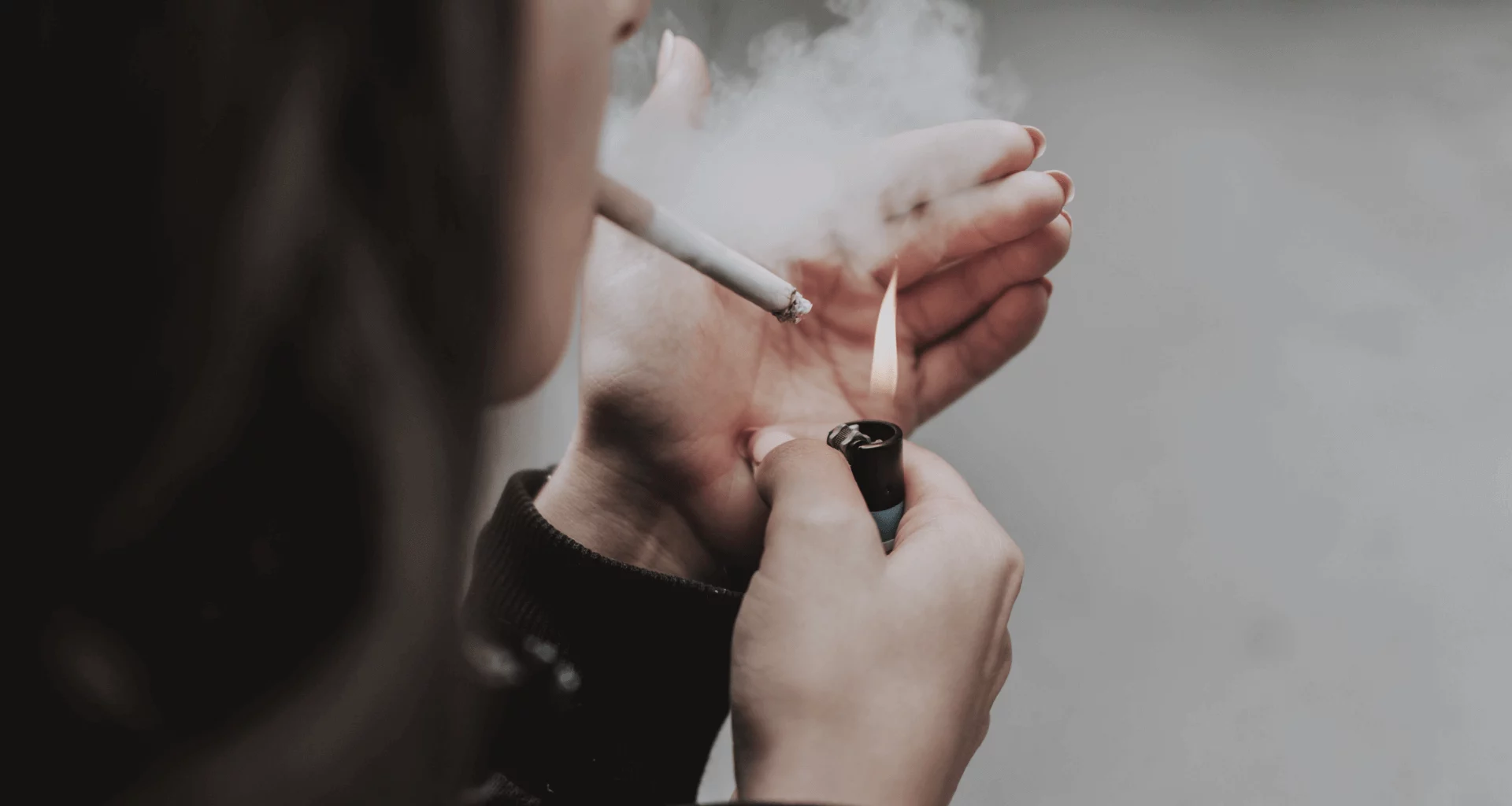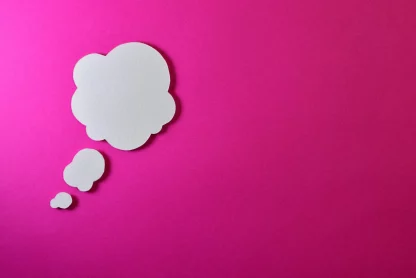We all have them—those pesky habits that seem to hold us captive, hindering our personal growth and well-being. Whether it’s biting your nails, procrastinating, or mindlessly scrolling through social media, breaking bad habits can feel like an uphill battle. But fear not, as there are effective strategies to help you free yourself from these destructive patterns. In this article, we explore eight powerful techniques to quit your worst habits once and for all. From understanding the psychology behind habits to practical tips for creating new routines, we provide a roadmap for successful habit change. It’s time to take control of your life and embark on a journey of self-improvement. Get ready to break bad and welcome positive transformation into your daily routine.
Table of Contents
- 1. Identify the triggers: Understanding what triggers your bad habits is an important first step in overcoming them.
- 2. Replace with positive habits: Identify positive habits that can replace the negative ones, and consciously make the effort to engage in them.
- 3. Practice mindfulness: Mindfulness can help you become more aware of your habits, and make more conscious decisions about whether to engage in them or not.
- 4. Gradual reduction: Rather than trying to quit cold turkey, try gradually reducing your bad habit to make the transition more manageable.
- 5. Understand the consequences: Recognize the negative impact that your bad habit having on your life, and use it as motivation to change.
- 6. Visualize success: Visualize yourself successfully overcoming your bad habit, and imagine how much better your life will be as a result.
- 7. Build a support network: Surround yourself with people who are supportive of your efforts to change, and who can provide encouragement and guidance along the way.
- 8. Use positive self-talk: Use positive affirmations and self-talk to reinforce your commitment to change and to remind yourself of your progress.
- Frequently Asked Questions

1. Identify the triggers: Understanding what triggers your bad habits is an important first step in overcoming them.
Stress
Stress is a common trigger for bad habits such as smoking, overeating, and substance abuse. According to a study, stress was found to be a significant predictor of smoking and substance use among adolescents. Stress triggers the release of cortisol, a hormone that affects the brain’s reward center, leading to the reinforcement of bad habits. To overcome stress-related triggers, stress management techniques such as meditation, deep breathing, and exercise can be helpful.
Social Pressure
Social pressure is another common trigger for bad habits such as drinking, smoking, and overeating. According to a study, social norms play a significant role in the initiation and maintenance of alcohol and drug use. To overcome social pressure, one can identify supportive social networks and engage in alternative social activities that do not involve bad habits.
Boredom
Boredom is a trigger for bad habits such as excessive internet use, overeating, and substance abuse. A study found that boredom was a predictor of problematic smartphone use among adolescents. To overcome boredom-related triggers, engaging in enjoyable and stimulating activities such as hobbies, sports, and socializing can be helpful.
Environmental Cues
Environmental cues are stimuli in the environment that prompt the performance of a bad habit. Examples of environmental cues include seeing a pack of cigarettes, smelling the aroma of food, or passing a bar. According to a study, environmental cues play a significant role in the relapse of smoking cessation. To overcome environmental cues, one can modify their environment by removing triggers, such as avoiding places that are associated with the bad habit or seeking alternative routes.
Negative Emotions
Negative emotions such as sadness, anxiety, and anger can trigger bad habits such as substance abuse, overeating, and self-harm. A study found that negative emotions were associated with impulsive behaviors. To overcome negative emotion-related triggers, engaging in healthy coping strategies such as talking to a trusted friend or mental health professional, practicing mindfulness, and self-care can be helpful.
Bad habits are often triggered by stress, social pressure, boredom, environmental cues, and negative emotions. Overcoming these triggers requires identifying them and developing strategies to manage them effectively. Strategies include stress management techniques, identifying supportive social networks, engaging in enjoyable activities, modifying the environment, and engaging in healthy coping strategies. With these strategies, one can break the cycle of bad habits and improve their mental and physical health.
2. Replace with positive habits: Identify positive habits that can replace the negative ones, and consciously make the effort to engage in them.
Exercise
Regular exercise is a positive habit that can replace negative habits such as smoking, overeating, and substance abuse. According to a study, exercise has been found to be an effective intervention for reducing substance use disorders. Exercise can increase dopamine levels, which can provide similar feelings of pleasure and reward as drugs and alcohol. To develop an exercise habit, one can start small by incorporating physical activity into their daily routine, such as taking a walk during lunch breaks or using the stairs instead of the elevator.
Healthy Eating
Healthy eating is a positive habit replacing negative habits such as overeating and binge eating. According to a study, a healthy diet can improve mental health outcomes such as depression and anxiety. To develop a healthy eating habits, one can start by setting achievable goals such as incorporating more fruits and vegetables into their diet, avoiding processed and sugary foods, and meal planning.
Mindfulness
Mindfulness is a positive habit replacing negative habits such as substance abuse and overeating. According to a study, mindfulness-based interventions have been found to be effective for reducing substance use disorders and improving mental health outcomes. Mindfulness can increase self-awareness, reduce stress, and improve impulse control. To develop a mindfulness habit, one can start by practicing mindfulness meditation for a few minutes each day and gradually increasing the duration over time.
Socializing
Socializing is a positive habit that can replace negative habits such as isolation and substance abuse. According to a study, social support has been found to be a protective factor against substance use disorders. Socializing can provide feelings of connection, belonging, and support. To develop a socializing habit, one can start by joining a club or group that aligns with their interests, volunteering, or attending community events.
Learning
Learning is a positive habit that can replace negative habits such as excessive internet use and procrastination. According to a study, lifelong learning has been found to improve mental health outcomes such as well-being and cognitive functioning. Learning can provide a sense of purpose, increase self-esteem, and improve cognitive skills. To develop a learning habit, one can start by reading books or articles on topics that interest them, taking online courses, or attending workshops and seminars.
Positive habits such as exercise, healthy eating, mindfulness, socializing, and learning can replace negative habits and improve mental and physical health outcomes. Developing and maintaining positive habits requires commitment, patience, and perseverance. To develop positive habits, one can start small, set achievable goals, and seek support from family and friends or mental health professionals if needed. With these strategies, one can create a positive and fulfilling lifestyle that promotes health and well-being.
3. Practice mindfulness: Mindfulness can help you become more aware of your habits, and make more conscious decisions about whether to engage in them or not.
Mindfulness and habit awareness
Mindfulness can help individuals become more aware of their habits by increasing their attention and focus on the present moment. According to a study, mindfulness-based interventions have been found to improve habit awareness and reduce automaticity. Habit awareness is the ability to recognize when a habit is being triggered and to bring conscious awareness to the decision to engage in the habit.
Mindfulness and conscious decision making
Mindfulness can also help individuals make more conscious decisions about whether to engage in their habits or not. According to a study, mindfulness-based interventions have been found to improve impulse control and decision-making. Mindfulness can increase self-awareness and help individuals recognize the consequences of their actions, making it easier to make conscious decisions about their habits.
Habit change and Mindfulness
Mindfulness can also help individuals change their habits by increasing their motivation and commitment to change. According to a study, mindfulness-based interventions have been found to be effective in reducing smoking and other addictive behaviors. Mindfulness can increase self-awareness and help individuals recognize the underlying causes of their habits, making it easier to address and change them.
Mindfulness practices
There are various mindfulness practices that can help individuals become more aware of their habits and make more conscious decisions. One such practice is the body scan, which involves bringing conscious awareness to different parts of the body and noticing any sensations or tension. Another practice is mindful breathing, which involves focusing on the breath and bringing attention back to the present moment whenever the mind wanders.
Mindfulness can be a useful tool for developing awareness of habits and making more conscious decisions about whether to engage in them or not. Mindfulness-based interventions have been found to be effective in reducing automaticity, improving impulse control, and increasing motivation to change. Practicing mindfulness through techniques such as the body scan and mindful breathing can help individuals develop the skills needed to become more aware of their habits and make more conscious decisions. By incorporating mindfulness into daily life, individuals can create a more intentional and fulfilling lifestyle that promotes well-being.
4. Gradual reduction: Rather than trying to quit cold turkey, try gradually reducing your bad habit to make the transition more manageable.
Gradual reduction and habit formation:
This can be effective in breaking the habit because it allows for the formation of new, healthier habits. According to a study, it takes an average of 66 days for a new habit to form. Gradual reduction allows for the gradual formation of new habits, making the transition more manageable.
Progressive reduction and self-efficacy:
Gradual reduction of a bad habit can also increase self-efficacy or the belief in one’s ability to change. According to a study, self-efficacy is a key factor in the success of behavior change. Progressive reduction allows individuals to build their self-efficacy by setting achievable goals and experiencing small successes along the way.
Gradual reduction and relapse prevention:
Gradual reduction of a bad habit can also help prevent relapse. According to a study, relapse is common in behavior change because individuals often have unrealistic expectations for themselves. Gradual reduction allows for a more realistic approach, reducing the likelihood of relapse.
Gradual reduction strategies:
There are various strategies that individuals can use to gradually reduce bad habits. One such strategy is to set achievable goals, such as reducing the habit by a certain percentage each week. Another strategy is to substitute the bad habit with a healthier alternative, such as drinking water instead of soda. Additionally, individuals can use mindfulness techniques, such as bringing awareness to the triggers that lead to the habit, to help reduce the habit gradually.
Gradually reducing a bad habit can be an effective approach to breaking the habit. Gradual reduction allows for the formation of new, healthier habits, increases self-efficacy, and helps prevent relapse. Strategies such as setting achievable goals, substituting the bad habit with a healthier alternative, and using mindfulness techniques can be helpful in gradually reducing a bad habit. By taking a gradual approach, individuals can make the transition more manageable and increase their chances of successfully breaking the habit.
Positive habits such as exercise, healthy eating, mindfulness, socializing, and learning can replace negative habits and improve mental and physical health outcomes
5. Understand the consequences: Recognize the negative impact that your bad habit having on your life, and use it as motivation to change.
Recognition and behavior change:
Recognizing the negative impact of bad habits can be a powerful motivator for behavior change. According to a study, individuals who were provided with feedback about the negative consequences of their behavior were more likely to engage in behavior change than those who did not receive feedback. This feedback helped individuals recognize the negative impact of their behavior, motivating them to make changes.
Recognition and self-awareness:
Recognizing the negative impact of bad habits can also increase self-awareness. According to a study, self-awareness is an essential component of behavior change. Recognizing the negative impact of bad habits can help individuals become more self-aware, allowing them to identify the triggers and cues that lead to the habit.
Recognition and goal setting:
Recognizing the negative impact of bad habits can also help individuals set goals. According to a study, goal setting is an essential component of behavior change. Recognizing the negative impact of bad habits can help individuals set specific, measurable, achievable, relevant, and time-bound (SMART) goals for behavior change.
Recognition and support:
Recognizing the negative impact of bad habits can also help individuals seek support. According to a study, social support is an essential component of behavior change. Recognizing the negative impact of bad habits can help individuals seek social support from friends, family, or professionals, increasing the likelihood of behavior change.
Recognizing the negative impact of bad habits is an essential step in getting rid of them. Recognition can motivate behavior change, increase self-awareness, and help individuals set goals, and seek support. Strategies such as providing feedback, identifying triggers and cues, setting SMART goals, and seeking social support can be helpful in recognizing the negative impact of bad habits. By recognizing the negative impact of bad habits, individuals can take control of their behavior and make positive changes in their lives.
6. Visualize success: Visualize yourself successfully overcoming your bad habit, and imagine how much better your life will be as a result.
Visualization and self-efficacy:
Visualizing yourself successfully overcoming a bad habit can increase self-efficacy, which is an individual’s belief in their ability to successfully complete a task. According to a study, visualization can enhance self-efficacy, which can lead to greater success in behavior change.
Visualization and motivation:
Visualizing yourself successfully overcoming a bad habit can also increase motivation. According to a study, visualization can enhance motivation, leading to greater success in behavior change. Visualization can create a positive mental image of success, which can be a powerful motivator for change.
Visualization and goal setting:
Visualizing yourself successfully overcoming a bad habit can also help with goal setting. According to a study, goal setting is an essential component of behavior change. Visualization can help individuals set specific, challenging, and achievable goals for behavior change.
Visualization and emotional regulation:
Visualizing yourself successfully overcoming a bad habit can also help with emotional regulation. According to a study, visualization can help individuals regulate their emotions, which can be an important component of behavior change. Visualization can create a positive emotional response to success, which can help individuals overcome negative emotions associated with the habit.
Visualizing yourself successfully overcoming a bad habit can be a powerful tool for behavior change. Visualization can increase self-efficacy, motivation, goal setting, and emotional regulation. Strategies such as creating a positive mental image of success, setting specific and achievable goals, and regulating emotions can be helpful in visualization. By visualizing success, individuals can take control of their behavior and make positive changes in their lives.
7. Build a support network: Surround yourself with people who are supportive of your efforts to change, and who can provide encouragement and guidance along the way.
Social support and motivation:
Surrounding yourself with people who are supportive of your efforts can increase motivation. According to a study, social support can enhance motivation, leading to greater success in behavior change. Social support can create a positive environment that encourages individuals to continue their efforts toward quitting their bad habits.
Social support and accountability:
Surrounding yourself with people who are supportive of your efforts can also provide accountability. According to a study, accountability can be a powerful motivator for behavior change. Social support can hold individuals accountable for their actions, which can increase their commitment to quitting their bad habits.
Social support and stress reduction:
Surrounding yourself with people who are supportive of your efforts can also reduce stress. According to a study, social support can reduce stress levels, which can be an important component of behavior change. Stress can be a significant barrier to quitting bad habits, and social support can help individuals manage stress and maintain their efforts toward behavior change.
Social support and self-efficacy:
Surrounding yourself with people who are supportive of your efforts can also increase self-efficacy. According to a study, social support can enhance self-efficacy, which can lead to greater success in behavior change. Social support can provide individuals with the confidence and resources they need to quit their bad habits.
Surrounding yourself with people who are supportive of your efforts can be a powerful tool for quitting bad habits. Social support can increase motivation, accountability, stress reduction, and self-efficacy. Strategies such as seeking out supportive friends and family, joining a support group, or working with a coach or therapist can be helpful in building a strong social support network. By surrounding themselves with supportive people, individuals can increase their chances of successfully quitting their bad habits and maintaining long-term behavior change.
8. Use positive self-talk: Use positive affirmations and self-talk to reinforce your commitment to change and to remind yourself of your progress.
Positive affirmations and self-talk can increase self-efficacy:
Positive affirmations and self-talk can increase self-efficacy, which is an individual’s belief in their ability to achieve their goals. According to a study, self-efficacy is a key predictor of behavior change. By using positive affirmations and self-talk, individuals can increase their self-efficacy, which can help them to quit their bad habits.
Positive affirmations and self-talk can enhance motivation:
Positive affirmations and self-talk can also enhance motivation. According to a study, self-talk can enhance motivation, leading to greater success in achieving goals. Positive affirmations can create a positive mindset, which can increase motivation and make the process of quitting a bad habit feel more manageable.
Positive affirmations and self-talk can reduce stress:
According to a study, positive self-talk can reduce stress and anxiety levels. Stress can be a significant barrier to quitting bad habits, and positive affirmations and self-talk can help individuals manage stress and maintain their efforts toward behavior change.
Positive affirmations and self-talk can change beliefs:
Positive affirmations and self-talk can also change beliefs. According to a study, self-affirmation can change an individual’s beliefs, leading to greater success in behavior change. Positive affirmations can change an individual’s beliefs about their ability to quit their bad habits, which can increase their commitment to the process of behavior change.
Using positive affirmations and self-talk can be a powerful tool for quitting bad habits. Positive affirmations and self-talk can increase self-efficacy, motivation, reduce stress, and change beliefs. Strategies such as creating a list of positive affirmations, practicing positive self-talk daily, or working with a coach or therapist to develop positive affirmations and self-talk can be helpful in building a positive mindset. By using positive affirmations and self-talk, individuals can increase their chances of successfully quitting their bad habits and maintaining long-term behavior change.
Frequently Asked Questions
Breaking bad habits can be challenging because they are deeply ingrained patterns of behavior that provide some form of gratification or comfort. Overcoming them requires understanding the underlying triggers and developing new coping mechanisms.
Setbacks are common during habit change. It’s important to be kind to yourself and avoid self-judgment. Instead, view setbacks as learning opportunities, reassess your strategy, and adjust your approach if necessary. Remember, persistence and perseverance are key to ultimately breaking bad habits.
Triggers can vary, but common ones include stress, boredom, social influence, emotional states, environmental cues, and ingrained routines. Identifying your specific triggers is key to effectively breaking bad habits.
Maintaining motivation is crucial. Set clear, achievable goals, track your progress, and reward yourself for milestones reached. Surround yourself with supportive individuals, seek accountability partners, and remind yourself of the long-term benefits of breaking your bad habits.









